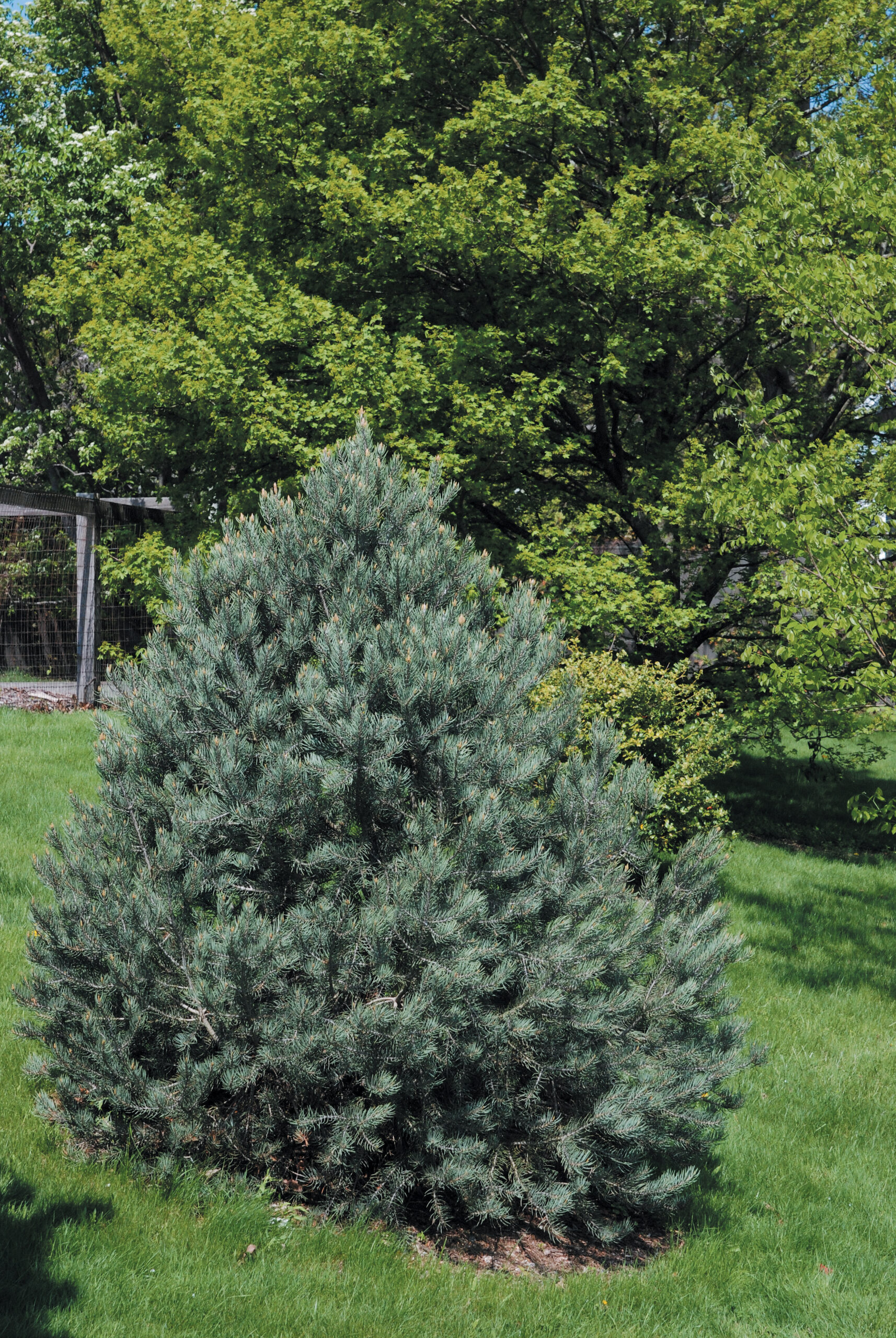I’ve led many plant identification classes and walks in my career as a horticulturist. When it comes to pines (Pinus), I’ve taught that pines always carry multiple needles grouped in fascicles (bundles), which readily differentiates them from spruces (Picea) and firs (Abies) (the other common “tall, pointy evergreens”), which both bear single needles. To then identify individual pine species, the first step is to see if the bundles hold two, three, or five needles. That’s still good advice about 99 percent of the time, but when I came to the Arnold Arboretum I discovered a notable exception to those rules: Pinus monophylla, the single-leaf pine.
Pinus monophylla is a member of the pine family (Pinaceae) and is one of 114 species in the genus Pinus. It is part of subsection Cembroides, a group of pine species native to the western United States and Mexico commonly known as pinyons, or piñons (P. monophylla is also known as single-leaf pinyon). The pinyons have thin-shelled, edible seeds; P. monophylla and P. edulis, Colorado or two-needle pinyon, have especially large (1/2 inch [1.3 centimeters] long), high-fat-content seeds that have long been harvested and used as an important food source by indigenous peoples.

Single-leaf pine grows about 15 to 30 feet (4.6 to 9.1 meters) tall and has a pyramidal form when young, becoming more irregular and spreading with age. As the common name indicates, this pine bears single needles on its stems, the only pine species to do so. Individual needles are thick, sharp-tipped, and bluish green with silvery stomatal lines (see inset photo on opposite page). Abundant small staminate (male) cones release pollen and the round female cones mature to about 1.5 to 2.5 inches long in two years. Pairs of large seeds are held in depressions on individual cone scales; seeds are readily eaten by many birds and other wildlife species, and animal seed-caching, especially by pinyon jays (Gymnorhinus cyanocephalus), is the primary means of seed dispersal for the species.
Pinus monophylla grows in a semi-arid native range that runs from northern Baja California to southern and eastern California, Nevada, the southeastern corner of Idaho, western Utah, and parts of Arizona and New Mexico. It is cold hardy enough (USDA Zone 6, average annual minimum temperature -10 to 0°F [-23.3 to -17.8°C]) for Boston, but our much wetter climate may be part of the reason this pine has been difficult to grow at the Arboretum.
We have tried a number of P. monophylla accessions through the years, the first one in 1908, but we currently have no living specimens in the collections. The last one was accession 400-88-B, which was a repropagation (by grafting) of a 1964 accession (287-64), which came from seeds wild collected in Nevada. Accession 400-88-B was a handsome, healthy-looking specimen when I photographed it growing in the dwarf conifer terrace at the west end of the Leventritt Shrub and Vine Garden in May 2009 (opposite page). Unfortunately, just a few years later it went into severe decline and was removed; signs of root rot were noted on its removal. In its native range, single-leaf pine typically grows on very well-drained, gravelly slopes. The much greater annual rainfall and moister soils at the Arboretum may well have contributed to the demise of this and other specimens.
Citation: Rose, Nancy. One of a Kind: Pinus monophyla. Arnoldia, 74(3): 40.
This unique pine species will certainly return to the Arboretum soon. Pinus monophylla is one of the approximately 400 taxa targeted for acquisition in the ongoing Campaign for the Living Collections (see the complete list in Arnoldia 73/3). We already have three seed accessions collected last year in Utah that are currently undergoing stratification in the Dana Greenhouses. And when we do have young single-leaf pines ready to move to the grounds, special care will be taken to place them in a site where, ideally, they will thrive for many years.
Nancy Rose is the editor of Arnoldia.